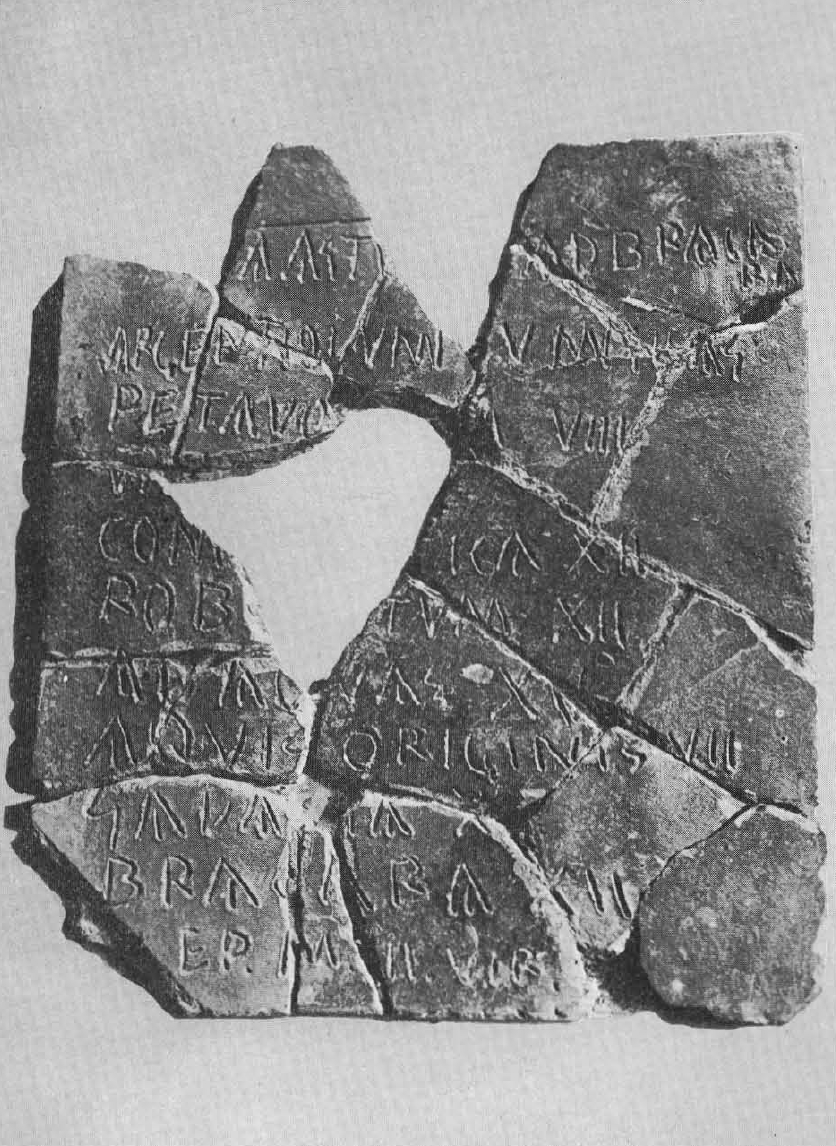Tabla de Astorga 4
Later Roman
Link
227 / 310
The Itinerario de Barro is composed of four clay plates, extraordinarily fragmented, which in their complete form would measure 14 X 12 cms. and of which only one, precisely the second, appears topped by a trapezoidal handle with a hole that, undoubtedly, would serve to hang it. In the four clay plates mentioned a series of roads in the northwest of the Iberian Peninsula with details of the respective mansions and the partial distances of each other.
The authenticity of the Itinerario de Barro clay plates had been continuously discussed (Arias 1987, Roldan 1975) but recent thermoluminescence technique analysis had proved their Roman authenticity (Fernández Ochoa et al. 2012).
This table has recorded a road that links Asturica Augusta with Bracara Augusta through the southern Asturian lands and the Trás-os-Montes region; this route coincides approximately with the Via 17 of the Antonine Itinerary.
- Arias, G. (1987): Repertorio de caminos de la Hispania romana, Madrid
- Blázquez, A. (1920): “Cuatro téseras militares”, BRAH, 77, pp. 99-107
- Diego Santos, F. (1997): “El Itinerario de Barro”, Nuestro Museo. Boletín Anual del Museo Arqueológico de Asturias, 1, pp. 91-104.
- Fdez. Ochoa, C., Morillo, A., Gil, F. (2012) «El Itinerario de Barro. Cuestiones de autenticidad y lectura», Zephyrus, LXX, 2012, 151-179
- García y Bellido, A. (1975): “El llamado Itinerario del Barro”, BRAH, 172, pp. 547-563.
- González Echegaray, J. (1979/80): “Las mansiones de la Placa 1 del ‘Itinerario de Barro’”, Altamira, 79-80, pp. 7-39.
- Roldán, JM. «LasTablas de Barro de Astorga ¿una falsificación moderna?», Zephyrus, XXIII-XXIV, 1972-73, 228 ss.
- Roldán, JM. (1975) Itineraria hispana. Fuentes para el estudio de las vías romanas en la Península Ibérica, Valladolid-Granada, 1975
- ARGENTIOLVM - Pleiades link
- PETAVO[NIV]M - Pleiades link
- VI[NIATIA] - Pleiades link
- COM[PLEV]TICA - Pleiades link
- ROB[ORE]TVM - Pleiades link
- AD AQVAS - Pleiades link
- AQVIS ORIGINIS - Pleiades link
- SALA[C]IA - Pleiades link
- BRACARA - Pleiades link

